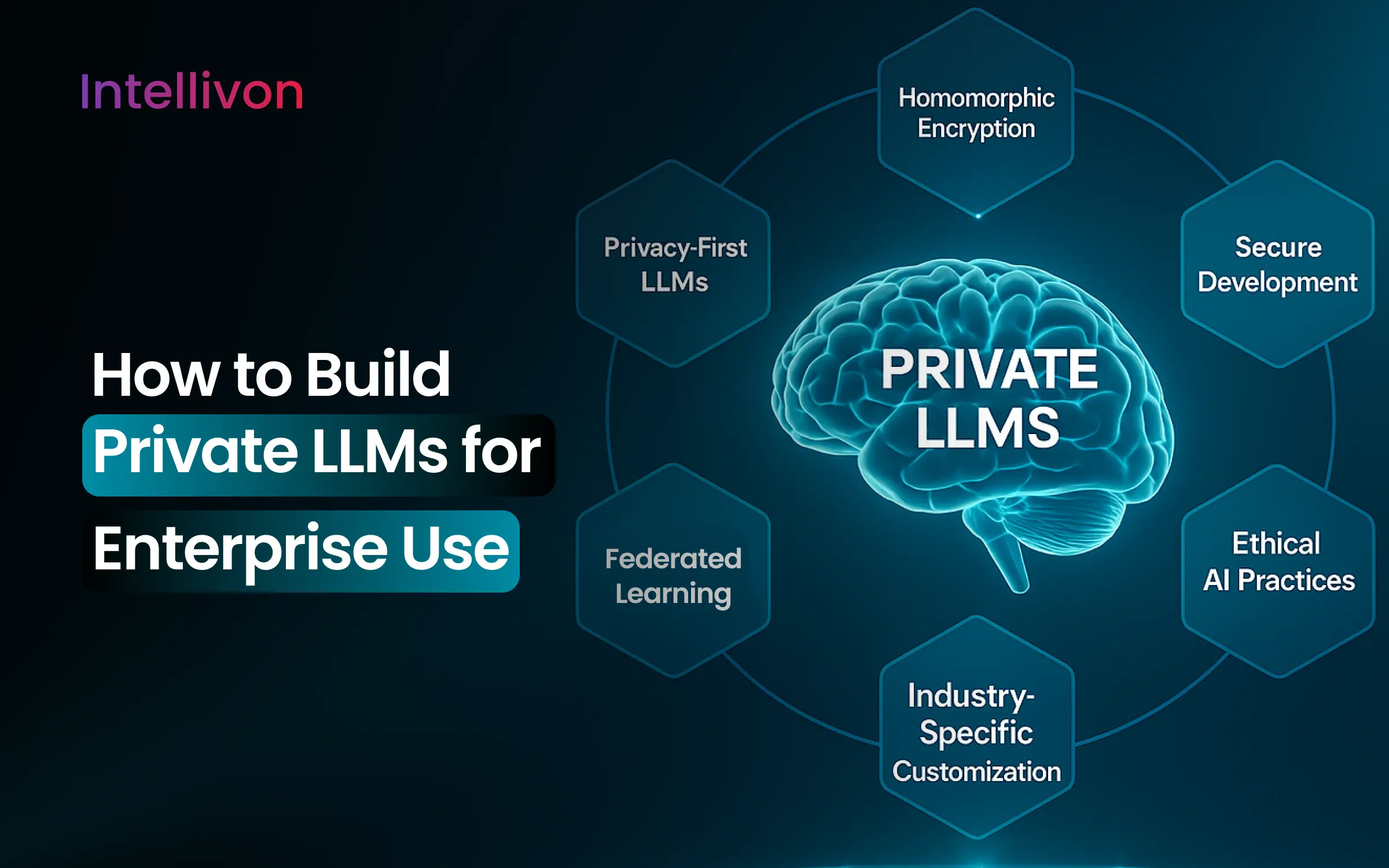Generative AI has immense potential, but without access to enterprise CRM, ERP, or internal data systems, it’s just guessing its results. Many enterprises invest in powerful AI models, only to see them produce generic responses, hallucinate facts, or miss the mark entirely. The core issue? These models lack real-time, business-specific context. Without their AI being context-aware, enterprises report a 20-31% increase in hallucinations, leading to inconclusive results.
This is where most enterprise AI initiatives break down. Even the most advanced LLMs fall short if they don’t understand your company’s goals, data landscape, or workflows. Without a structured way to feed them relevant, up-to-date context, AI becomes disconnected from your operations, reducing ROI, trust, and impact. Here is where Model Context Protocol (MCP), a strategic architecture that links AI models to your real business environment, comes in. It’s a foundational layer that ensures AI decisions are grounded in your systems, processes, and priorities and is context-aware.
At Intellivon, we’ve helped leading enterprises build and deploy MCPs that turn AI from a disconnected novelty into a fully integrated business co-pilot. In this guide, you’ll learn exactly what an MCP is, why your AI needs one, and how we build and implement it step by step for enterprise AI.
Understanding Model Context Protocol for Enterprise AI
An MCP is an open framework designed for enterprise AI systems like LLMs or intelligent agents to securely and efficiently access and use relevant context from various external data sources and tools, all without needing separate custom integrations for each one.
To understand this better, imagine your AI as a smart assistant sitting in your office. It’s sharp, fast, and well-trained. But when you ask it to pull up last quarter’s sales report, it just stares blankly. Why? Because it doesn’t know where to look or how to get it. With MCP, this problem is solved within minutes. The AI tells the MCP what it needs, like “Check the quarterly sales report.” The MCP then sends the right command to the correct tool, like your CRM or data warehouse, in a language that the system understands.
Just like a remote doesn’t store content but knows how to access your TV, soundbar, and streaming box, the MCP doesn’t hold data. It knows how to route AI requests to the right business tools, instantly and intelligently.
Key Components of an MCP
An effective MCP is made up of several connected parts. Each plays a critical role in making your enterprise AI context-aware and action-ready.
1. AI Client
This is your AI model or agent, like an LLM. It’s the brain behind the interaction, generating requests based on user input or tasks.
2. The MCP Server
This is the translator and traffic controller. It listens to what the AI wants, understands the request, and sends it to the right tool in a format that the tool can process. It’s not an interface, but the bridge between thought and action.
3. Tools & Resources
These are your internal systems, like databases, APIs, spreadsheets, ERP, CRM, knowledge bases, and more. MCP allows your AI to safely interact with these tools in a controlled and secure way.
Key Takeaways of the MCP Market
According to Fortune Business Insights, the Context-Aware Computing Market is projected to grow from USD 70.94 billion in 2025 to USD 122.20 billion by 2030, at a compound annual growth rate (CAGR) of 11.49%.
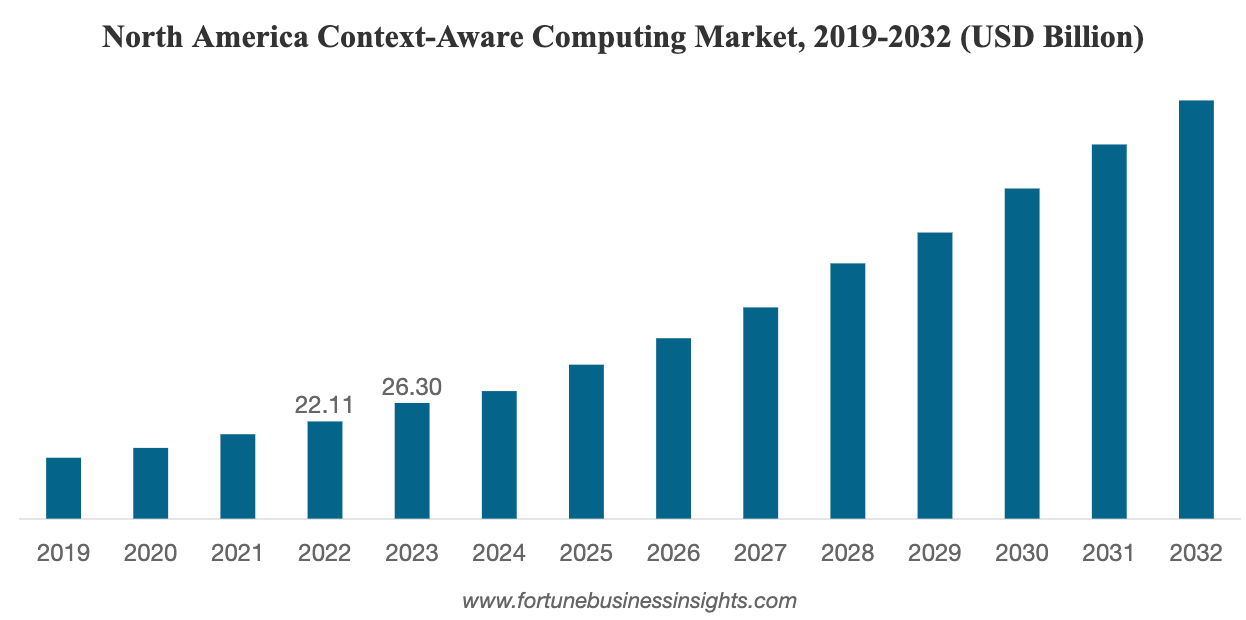
- The global MCP market is expected to reach $1.8 billion to $10.3 billion by 2025, growing at 34% annually due to rising demand for context-aware AI.
- Over 90% of organizations investing in AI are implementing or planning to implement MCP-enabled architectures, highlighting near-universal enterprise interest.
- Leading vendors like OpenAI, Microsoft, Anthropic, and SuperAGI are incorporating MCP standards into their products, validating its role in AI interoperability.
- MCP servers support large context windows (up to 10,000 tokens), high throughput (up to 1,000 requests per second), and innovations like federated learning and quantum-enhanced context.
- MCP is especially beneficial for data-heavy, compliance-driven industries like healthcare and finance, with notable use cases in customer support, enterprise automation, and IoT.
Challenges Enterprises Face While Deploying AI Models
Even with powerful models and major investments, many enterprises struggle to translate AI into real business value. Without a structured context layer, these challenges often go unresolved, thereby slowing down adoption, accuracy, and ROI.
1. Data Fragmentation and Siloes
Enterprise data is usually spread across multiple platforms, like CRMs, ERPs, data lakes, and legacy systems. Since these systems rarely communicate well, AI ends up operating on partial, outdated information. This leads to weak predictions, missed insights, and stalled pilots that fail to scale due to inaccessible, siloed data.
Data fed to AI systems is often inconsistent, unlabeled, or simply not fit for purpose. Without structure or accuracy, even advanced models generate hallucinations, confident but incorrect outputs. Over time, users lose trust in AI results, reducing adoption and value.
2. Lack of Legacy Integration
Most enterprises depend on a mix of modern and legacy tools that don’t easily support integration. Connecting AI to each system often requires custom development, which is time-consuming and error-prone. These brittle connections slow down projects and make scaling difficult.
3. Organizational and Operational Resistance
Even when AI systems are technically sound, they often face pushback from within. Employees may resist adoption due to a lack of training, skepticism, or simple unfamiliarity with how AI fits into their roles. Without clear communication and change management, usage drops and impact is limited.
4. Governance, Security, and Compliance Risks
AI systems must align with strict internal and external compliance rules, covering privacy, security, ethics, and more. Meeting these standards can be complex and resource-intensive. Fear of breaches, fines, or ethical missteps often leads to overly cautious or piecemeal deployments.
8. Lack of Real-Time Context
AI models often operate without access to the exact user, data, or workflow context needed at the moment of decision-making. This disconnect leads to responses that are generic, outdated, or just wrong. Without real-time context, even high-performing models become unreliable or irrelevant.
Adopting MCP gives enterprises a one-way ticket out of these consistent challenges since it addresses each one with precision.
Why MCP is Non-Negotiable for Enterprise AI Deployment
MCP fills critical gaps that have long limited the reliability, scalability, and value of AI in real-world settings. Here’s why it is essential for modern enterprise AI deployment:
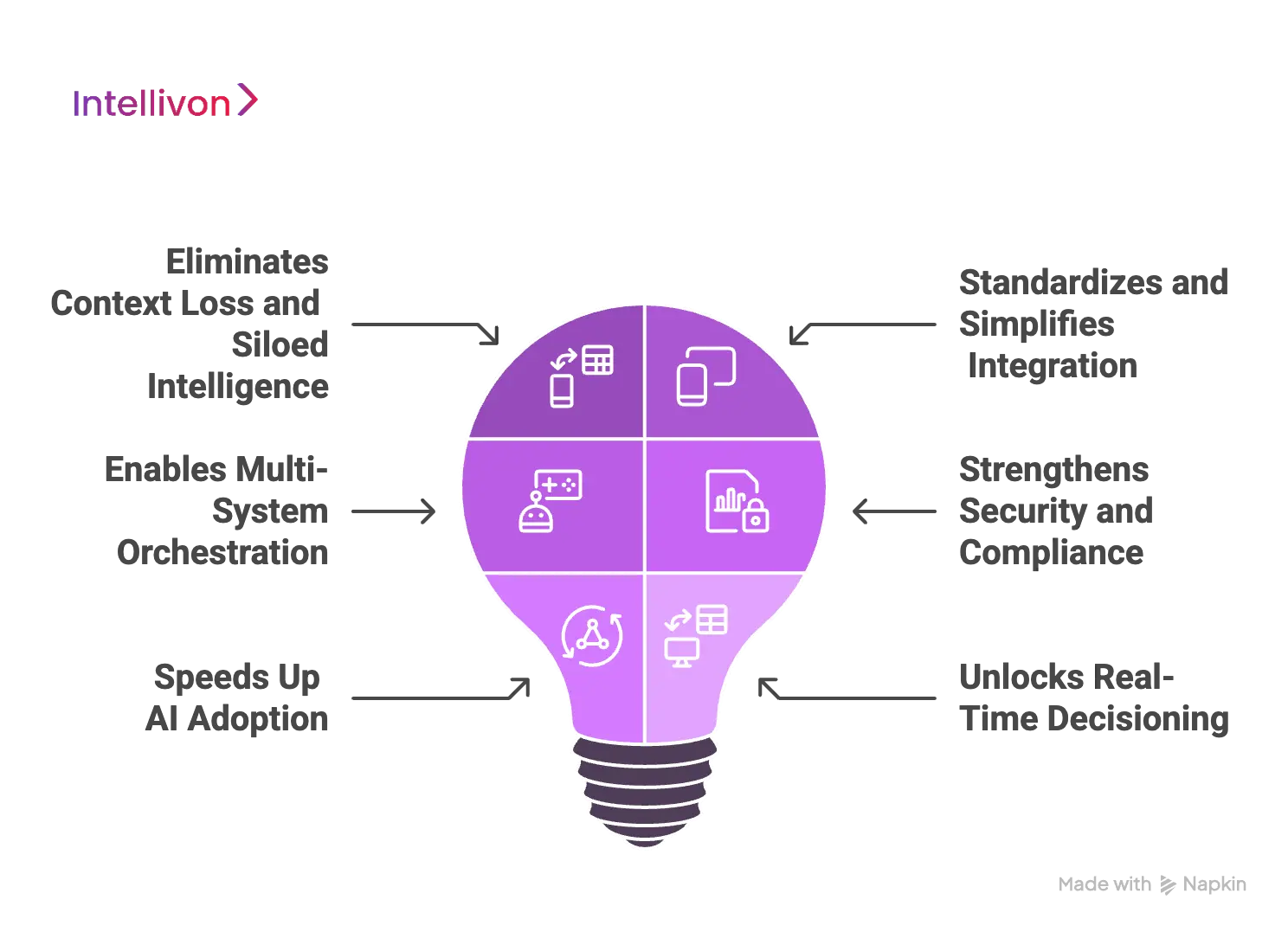
1. Eliminates Context Loss and Siloed Intelligence
Most AI systems today operate in a vacuum. They can’t access your live data, past interactions, or in-the-moment business context. As a result, they repeat the same mistakes, hallucinate facts, or offer incomplete answers. MCP solves this by connecting AI models to structured, persistent context from all relevant enterprise systems, like CRM, ERP, databases, and more. This gives AI real-time awareness of users, workflows, and decisions, making its outputs smarter and more trusted.
2. Standardizes and Simplifies Integration
Without MCP, every time you connect AI to a new tool or dataset, it requires a custom integration. This is slow, expensive, and fragile. MCP introduces a standardized, reusable protocol for secure connectivity between AI and enterprise tools. Whether you’re integrating one model or deploying hundreds, MCP speeds up delivery and reduces cost, without rebuilding from scratch each time.
3. Enables Multi-System Orchestration
Enterprise workflows rarely live in one system. They span applications, teams, and data layers. With MCP, AI agents, like retrievers, planners, or verifiers, can work together across systems, sharing context and collaborating intelligently. This makes complex, cross-platform automation possible, allowing enterprises to move toward true agentic AI that understands and acts within end-to-end workflows.
4. Strengthens Security and Compliance
AI cannot be deployed at scale without strict control. Enterprises need to manage data access, user permissions, compliance rules, and audit logs. MCP builds these into its core, supporting secure protocols like OAuth 2.1. Every AI action is governed, permissioned, and traceable, ensuring full compliance with privacy laws, internal policies, and regulatory standards.
5. Speeds Up AI Adoption
Deploying AI doesn’t need to take months. MCP reduces the setup time by eliminating repetitive integration tasks. This allows teams to prototype, test, and launch AI solutions quickly. As a result, enterprises can move from POCs to real business impact in a fraction of the time.
6. Unlocks Real-Time Decision-Making
AI works best when it can learn from the past and act in the present. MCP gives models access to fresh, real-time data and allows context to persist across sessions and tools. This supports dynamic decision-making, such as real-time fraud detection or personalized pricing. It also enables continuous improvement as feedback loops refine the system over time.
MCP transforms AI from isolated experiments into enterprise-ready infrastructure. It gives AI the context it needs to be accurate, reliable, and actionable, every time.
Use Cases of MCPs on Industry-Specific Enterprise AI Needs
Different industries have unique needs, but the one constant is the need for real-time, relevant context. MCP bridges the gap between AI systems and the business data they need to operate effectively. Below, we explore how MCP enables smarter AI across key industries.

1. Healthcare
Healthcare systems operate under strict regulations like HIPAA while managing complex patient data. MCP enables AI models to access detailed medical context securely and in real time, empowering clinical decisions, diagnostics, and personalized care.
1. Predictive Diagnostics
AI uses MCP to pull historical records, lab results, and lifestyle data, helping identify early signs of disease. This supports preventive healthcare and improves long-term outcomes.
2. Personalized Treatment Recommendations
By integrating data from EHRs, prescriptions, and current vitals, AI tailors treatment plans to individual patients, increasing both safety and effectiveness.
3. Real-Time Clinical Decision Support
Doctors receive instant, AI-powered suggestions during consultations, based on full patient context fetched via MCP, boosting accuracy and confidence.
Example – Mercy Health
Mercy Health, a U.S.-based healthcare system, uses an MCP architecture to unify data from multiple care facilities and systems. This allows their AI tools to deliver real-time recommendations during patient interactions while staying fully compliant with data security protocols.
2. Finance
The financial sector thrives on accurate, high-speed data processing across transactions, portfolios, and regulatory systems. MCP provides a standard way to connect AI models to secure, real-time data, improving compliance, risk assessment, and fraud detection.
1. Fraud Detection
AI uses MCP to analyze live transaction data, account behaviors, and known fraud patterns, detecting anomalies before they escalate.
2. Algorithmic Trading
MCP enables access to live market data and contextual company insights, helping AI optimize trading strategies in milliseconds.
3. Regulatory Compliance Reporting
By connecting to internal reporting tools and external guidelines, MCP allows AI to generate audit-ready reports automatically.
Example – Rabobank
Rabobank, a global cooperative bank based in the Netherlands, uses MCP principles to link AI systems with their regulatory, transaction, and customer platforms. This helps automate compliance checks and monitor real-time financial risks more effectively.
3. Retail & E-Commerce
Retailers deal with fragmented data across sales, marketing, logistics, and customer touchpoints. MCP acts as a unifying layer, allowing AI to understand real-time shopper behavior and optimize experiences and operations.
1. Personalized Product Recommendations
AI analyzes browsing habits, purchase history, and feedback, made accessible via MCP, to suggest more relevant products to customers.
2. Dynamic Pricing
MCP allows real-time integration of competitor prices, inventory, and demand trends to help AI set smart, adaptive pricing.
3. Demand Forecasting
Unifying data from POS, CRM, and market trends enables more accurate inventory planning and reduced overstocking.
Example – Zalando
Zalando, a leading European fashion e-commerce company, uses an MCP-like architecture to support AI-powered personalization engines. By connecting AI models to customer behavior, logistics data, and returns history, they optimize product suggestions and pricing in real time.
4. Manufacturing & IoT
Manufacturers rely heavily on sensor data and automated workflows. MCP connects AI models with operational systems in real time, supporting predictive maintenance, asset tracking, and smart quality control.
1. Predictive Maintenance
MCP allows AI to monitor equipment in real time, pulling sensor data to predict wear-and-tear or impending failure.
2. IoT Data Integration
AI systems analyze data from connected devices, like temperature sensors and motion detectors, enabling better control over factory operations.
3. Automated Quality Control
AI detects manufacturing defects early by contextualizing production metrics, machine state, and previous outcomes.
Example – Bosch Manufacturing Solutions
Bosch’s industrial AI division integrates MCP-style infrastructure to connect machine data from factories around the globe. This lets their AI systems proactively monitor equipment and minimize unexpected downtime.
5. Customer Support & Service
Support teams often work with fragmented CRM, ticket, and interaction data. MCP enables AI to access the full customer journey context, delivering faster resolutions, smarter routing, and personalized assistance.
1. Automated Support Bots
AI agents access up-to-date customer records, tickets, and preferences to resolve issues without human intervention.
2. Ticket Routing and Prioritization
MCP allows AI to evaluate issue context, customer value, and urgency, routing support tickets to the right team.
3. Personalized Experiences
By understanding previous interactions and behavioral patterns, AI tailors offers, messages, and solutions to each user.
Example – Salesforce
Salesforce, a US-based SaaS company, uses an MCP-like architecture to enable context-aware AI in their customer support and CRM platforms. Their AI-powered assistants resolve customer inquiries faster by seamlessly accessing relevant data from CRM records, previous interactions, and knowledge bases, delivering personalized and timely support.
6. Legal & Compliance
Legal teams work with dense documents and need precision. MCP connects AI to contracts, past case law, compliance documents, and internal policies, enabling faster document review and legal analysis.
1. Contract Analysis and Risk Detection
AI scans agreements for clauses, obligations, and risks, fueled by contextual access to related documents and legal rules.
2. Legal Research
MCP lets AI surface the most relevant precedents based on case type, jurisdiction, and client context.
3. Compliance Monitoring
Regulatory obligations are cross-checked automatically using AI systems that draw on up-to-date compliance frameworks.
Example – Relativity
Relativity, a legal tech firm, uses AI tools underpinned by MCP-style architectures to streamline document review and e-discovery. This reduces time spent on manual legal tasks while improving precision.
7. Energy & Utilities
Energy providers must balance supply, demand, maintenance, and sustainability goals. MCP helps AI models access live consumption data, grid performance, and predictive analytics, driving efficiency and resilience.
1. Energy Demand Forecasting
AI predicts usage spikes and trends by combining historical data with real-time meter readings via MCP.
2. Predictive Grid Maintenance
Sensor data is continuously monitored, allowing AI to flag potential outages or maintenance needs before failures occur.
3. Sustainable Energy Management
MCP enables AI to manage renewable energy flows dynamically, adapting to weather patterns, usage, and grid demand.
Example – Enel Group
Enel is a multinational energy company that uses an MCP-enabled AI system to optimize grid performance and maintenance. The AI balances load, detects faults, and integrates renewable sources in real time.
These sectors benefit the most from MCP because they require data-intensive, real-time, and highly accurate AI models to drive decision-making, compliance, and operational efficiency.
How We Build Model Context Protocol for Your Enterprise AI
Deploying AI without the right context is like navigating a city without a map. At Intellivon, we help enterprises build MCPs that give their AI systems the structured, real-time awareness they need to make intelligent, trustworthy decisions. Our implementation approach is designed for clarity, security, and long-term scalability. Here’s how we do it.
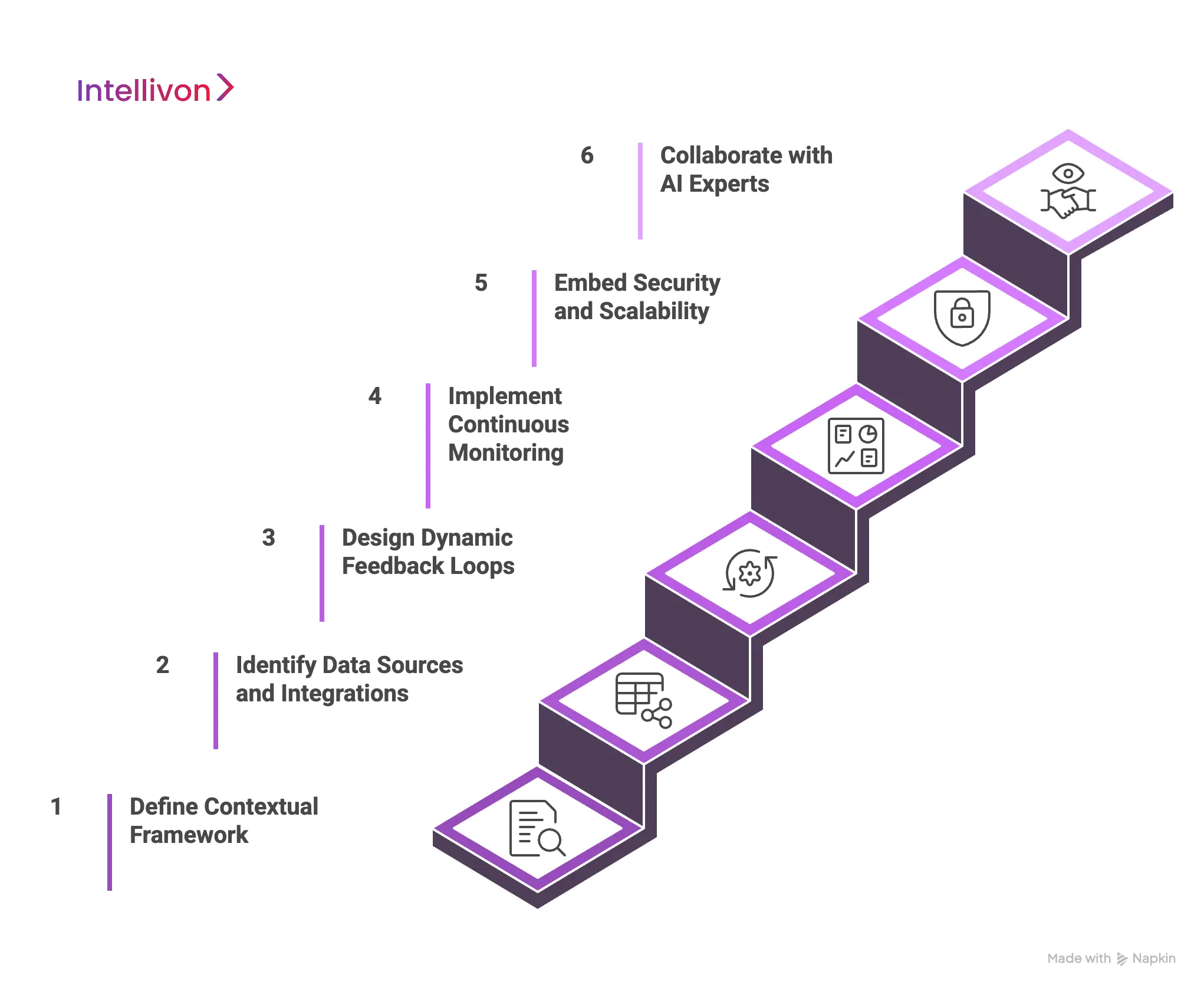
Step 1: Define Contextual Framework
Every enterprise has a different definition of context. In healthcare, it could mean access to patient records and treatment timelines. In finance, it’s about transaction history, customer profiles, and compliance flags. We start by working closely with your teams to define exactly what context matters most for your AI applications.
This step ensures that we build a framework aligned with your business logic, workflows, and decision points, so your AI always has the right information at the right time.
Step 2: Identify Data Sources and Integrations
Next, we take inventory of all relevant data sources, both internal and external. These may include CRM platforms, ERP systems, IoT sensors, cloud storage, third-party APIs, customer support databases, and more.
Our team designs real-time integrations using industry-standard protocols, ensuring that AI models receive a unified and up-to-date stream of information. This eliminates data silos and enables seamless orchestration across departments and tools.
Step 3: Design Dynamic Feedback Loops
AI systems should never be static. With MCP, we create dynamic feedback mechanisms that allow your models to learn and evolve based on user input, real-world results, and system performance.
Whether it’s adjusting recommendations based on customer behavior or refining fraud detection logic over time, these feedback loops allow your AI to self-correct and improve continuously, without waiting for manual updates or retraining.
Step 4: Implement Continuous Monitoring
An effective MCP must stay current with shifting business needs and data environments. We build real-time monitoring dashboards and alert systems to track the performance of the protocol. These tools help detect anomalies, surface bottlenecks, and flag outdated integrations.
Based on these insights, we provide regular updates and refinements to ensure your MCP remains aligned with evolving enterprise goals and technical standards.
Step 5: Embed Security and Scalability
From the first line of code, we build your MCP with enterprise-grade security in mind. We implement robust identity and access controls, secure authentication (like OAuth 2.1), encryption standards, and detailed audit logs.
We also tailor compliance features to meet regulations like GDPR, HIPAA, SOC 2, or your industry’s unique standards. Importantly, we design the MCP to scale with your growth, making it easy to expand capabilities, onboard new systems, and support multiple AI agents in parallel.
Step 6: Collaborate with AI Experts
Throughout the journey, our AI engineers work hand-in-hand with your business leaders, data teams, and IT stakeholders. We bring deep domain knowledge and implementation experience to guide your decisions, troubleshoot edge cases, and customize solutions that reflect your unique business context.
Whether you’re building a single AI use case or scaling across global teams, we ensure your MCP delivers tangible, long-term value.
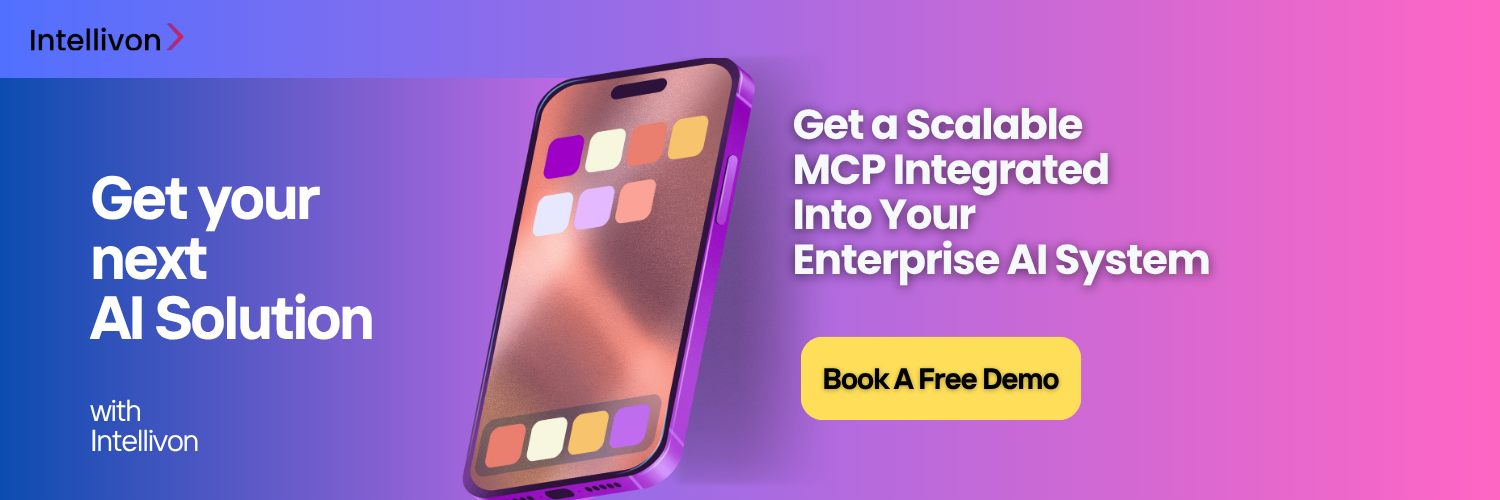
Best Practices We Follow to Implement MCPs For Enterprise AI
A successful MCP integration is about building an AI foundation that is secure, scalable, and aligned with your business. At Intellivon, we follow a set of proven best practices to ensure your MCP delivers long-term value across your enterprise ecosystem.
1. Security and Access Control
Security is non-negotiable. We implement strict access control layers (ACLs) that regulate what can interact with MCP servers. AI agents and users operate under role-based permissions, so they only perform authorized actions. We also apply schema validation to ensure data passed through the protocol is correct and safe, helping prevent leaks or injection attacks.
2. Comprehensive Integration Planning
Before a single line is deployed, we assess your entire data and tool landscape. This includes identifying all relevant applications, APIs, databases, and third-party services. By mapping every integration point up front, we avoid redundant connectors, eliminate blind spots, and ensure MCP servers connect cleanly across your enterprise stack.
3. Modular Implementation
We never build all at once. Instead, we use a phased approach, starting with critical systems and scaling gradually. This modular strategy helps reduce risk, supports rapid adoption, and allows us to fine-tune the protocol based on early usage. Over time, your MCP grows organically to support more tools and use cases.
4. Real-Time Monitoring
Visibility drives performance. That’s why we embed real-time monitoring tools and detailed logs across your MCP infrastructure. These systems help you track performance metrics, detect issues early, and create audit trails for security and compliance. If something breaks, you’ll know exactly where, when, and why.
5. User-Centric Experience Design
We design with people in mind. Interfaces are intuitive, with clear prompts, consent flows, and access transparency. This helps users trust the AI while keeping them in control.
6. Alignment with Enterprise Governance
Your MCP shouldn’t operate in isolation. We align all protocol controls, like authentication, compliance, and access permissions, with your existing governance frameworks. This allows policy enforcement to remain consistent across your enterprise, from data access to AI actions, while reducing regulatory risk.
7. Continuous Feedback and Optimization
We set up continuous feedback loops to monitor protocol performance and user interactions. Based on this data, we optimize configurations, fine-tune context resolution, and adapt to your evolving business needs. Your MCP improves alongside your AI maturity.
5 Steps We Follow To Safeguard MCP for Your Enterprise AI
Security is at the heart of every successful MCP deployment. At Intellivon, we use a multi-layered security framework to ensure your enterprise AI runs on a foundation that is safe, compliant, and resilient to ever-evolving threats. Here’s how we protect your MCP at every stage:
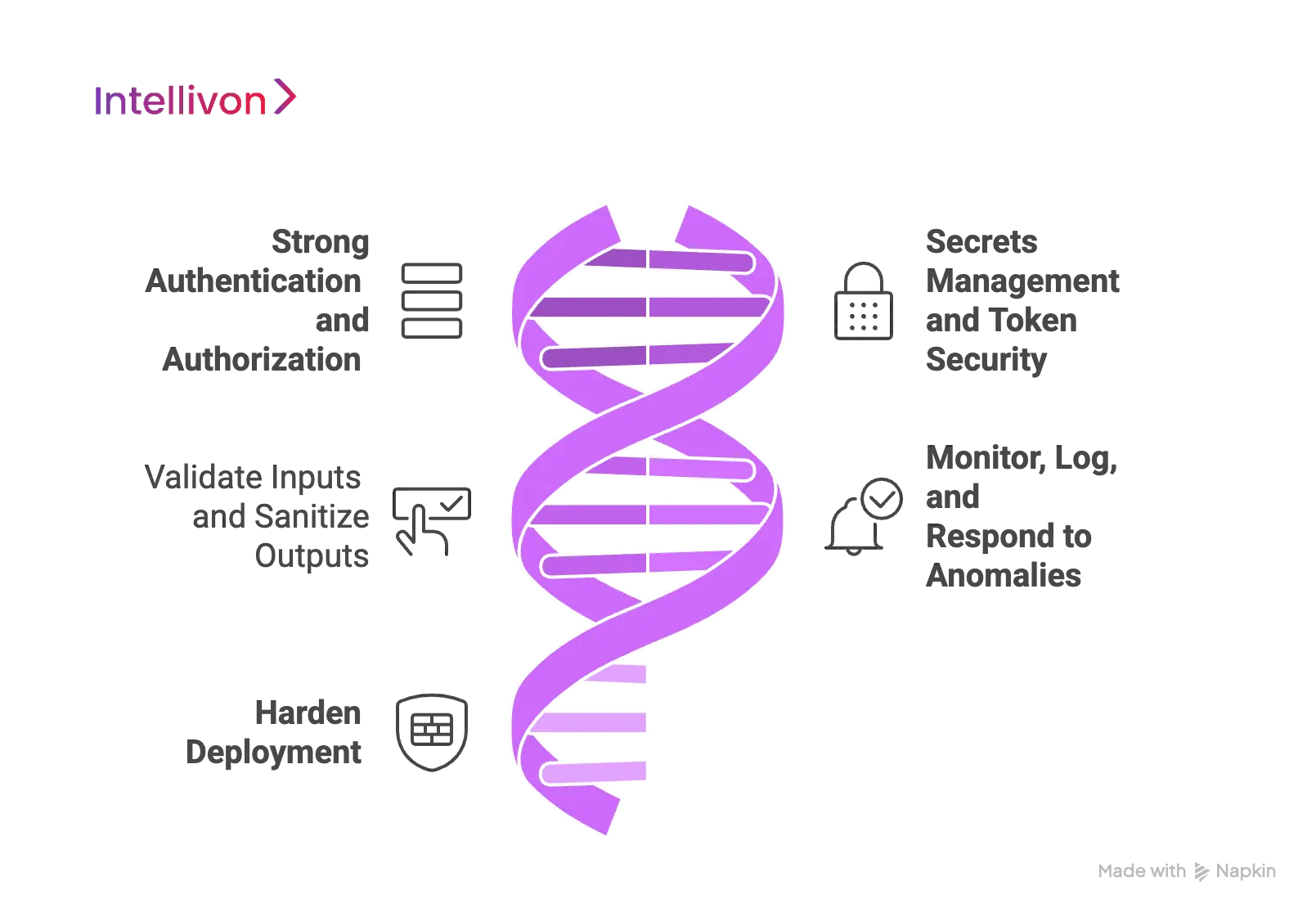
1. Strong Authentication and Authorization
We secure every component of the MCP infrastructure using industry-standard protocols like OAuth 2.1 and OpenID Connect. Each tool, AI agent, and human user gets a unique identity token and operates within strict role-based access controls (RBAC). This ensures only authorized actors can access or interact with sensitive systems and data, minimizing the surface area for potential breaches.
2. Secrets Management and Token Security
Instead of hard-coded credentials, which are vulnerable to leaks, we use centralized vaults and secret managers to store all access keys. Tokens are dynamically issued, short-lived, and automatically rotated or revoked when needed. This limits the lifespan of any exposed credentials and greatly reduces the risk of misuse or infiltration.
3. Validate Inputs and Sanitize Outputs
To prevent malicious data injection or AI misuse, we rigorously validate all inputs against pre-defined schemas before any data is processed. On the output side, we sanitize AI-generated responses to ensure they don’t inadvertently reveal sensitive information or allow prompt-based exploits. This dual-layer protection keeps both data and interactions safe.
4. Monitor, Log, and Respond to Anomalies
We implement comprehensive logging and real-time monitoring across all MCP activities. These logs feed directly into your Security Information and Event Management (SIEM) systems. If any anomaly is detected, like unauthorized access attempts or unusual behavior, incident response protocols and predefined kill-switches can be triggered immediately to contain threats.
5. Harden Deployment
Our team uses containerization, sandboxing, and network isolation to restrict what each MCP component can access. We also conduct regular security audits, vulnerability scans, and patch updates to close loopholes and keep your system aligned with the latest security standards. These practices ensure that even as your AI scales, your MCP remains airtight.
By embedding these safeguards into every layer of your AI stack, we help you deploy AI that’s not only powerful, but also secure, trustworthy, and compliant.
How MCPs are Adapting to Emerging AI Technology
MCP is becoming a core infrastructure layer for the future of intelligent systems. As enterprise AI rapidly evolves, so do the demands placed on context delivery, integration, and governance. MCPs are meeting these demands head-on by adapting to breakthroughs in AI architecture, multimodal data, and regulatory expectations. Here’s how MCPs are keeping pace, and even getting ahead of emerging AI technologies:
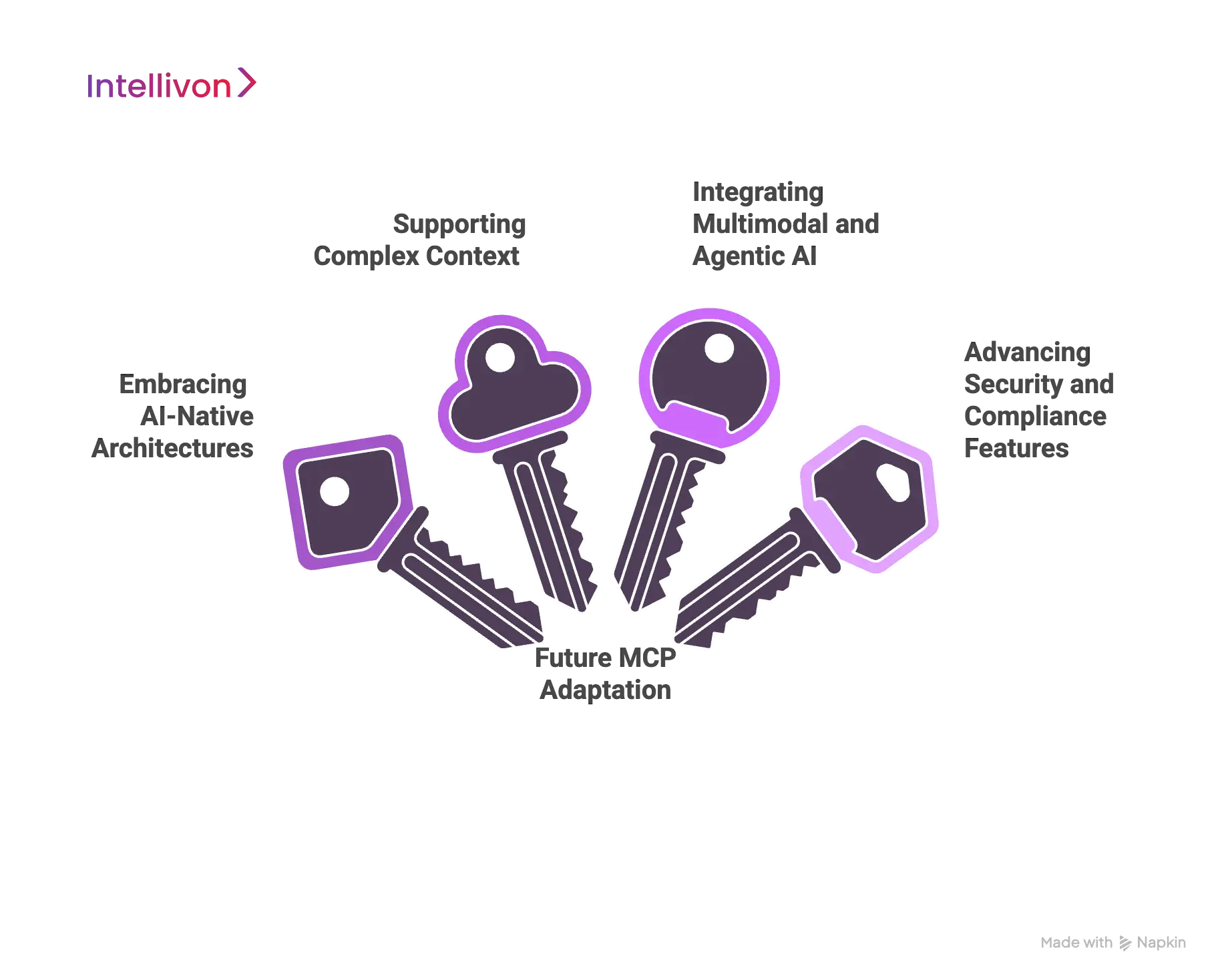
1. Embracing AI-Native Architectures
Traditional system integration was built for humans. Today’s MCPs are designed for AI agents from the ground up. These modern implementations allow AI systems to autonomously discover tools, fetch data, and take actions, without needing hardcoded rules or human-triggered workflows. The result is a more efficient, low-maintenance AI environment that scales with ease.
2. Supporting Complex Contexts
Advanced AI models need massive amounts of information to generate accurate results. MCPs are adapting with dynamic context compression, quantum-enhanced processing, and even early support for neuromorphic computing. These innovations help MCPs manage large context windows without overloading the system, giving AI the information it needs to act with precision and speed.
3. Integrating Multimodal and Agentic AI
AI now processes images, audio, video, and IoT data in real time. MCPs are evolving to unify these inputs into clean, consistent context streams. They also support agentic AI, where multiple specialized agents (like planners, retrievers, and verifiers) work together toward a shared business goal. MCP enables seamless coordination among these agents, all grounded in a shared understanding of enterprise context.
4. Advancing Security and Compliance Features
As AI becomes more powerful, security and governance must evolve too. MCPs are integrating zero-trust security models, fine-grained access control, and cryptographic verification to meet enterprise-level compliance standards. These features help ensure that even the most advanced AI systems operate safely within high-risk or regulated environments like healthcare, finance, and government.
It’s a future-proof framework that enables secure, scalable, and intelligent AI deployments. Its open, extensible nature ensures it will stay relevant as AI technologies continue to evolve, making MCP a critical pillar of modern enterprise AI strategy.
Conclusion
Building and implementing MCP is no longer optional for enterprises aiming to harness the full power of AI. Without real-time, structured access to business context, even the most advanced models risk delivering generic or misleading results.
MCP bridges this gap, connecting AI to the tools, data, and workflows that define your enterprise. As AI systems grow more capable and complex, MCP provides the secure, scalable, and intelligent foundation needed to turn isolated AI tools into true business partners.
Ready To Make Your Enterprise AI Context-Aware and Scalable?
With over 11 years of experience in enterprise AI and 500+ successful implementations, Intellivon is your trusted partner in deploying MCPs that go far beyond surface-level integrations. We help enterprises shift from isolated, generic AI to intelligent, secure systems that deliver real-time, context-aware performance across every business function.
What Sets Intellivon Apart?
- AI-Native MCP Architecture: We build MCPs specifically designed for AI agents, enabling autonomous, secure, and intelligent access to enterprise data and tools at scale.
- Enterprise-Grade Security & Compliance: Our deployments support cloud, hybrid, and on-prem setups with RBAC, OAuth 2.1, encrypted pipelines, and detailed audit trails for full compliance and control.
- Seamless Multi-System Integration: We connect your AI systems to CRMs, ERPs, IoT networks, databases, and third-party tools without brittle, custom connectors, using modular, scalable designs.
- Real-Time Context Delivery: We implement automated syncing and memory management, so your AI always has up-to-date, accurate context without constant retraining or manual input.
- Tailored to Your Business Needs: From finance copilots to manufacturing agents, we build MCPs around your workflows, regulations, and strategic priorities, ensuring adoption and ROI.
Book a free strategy call and our AI Experts will provide you with:
- A full audit of your data, systems, and AI maturity
- Use case identification aligned with measurable enterprise outcomes
- A deployment roadmap built for your compliance, architecture, and scaling goals
- A custom MCP design that empowers real-time, grounded AI interaction

FAQ’s
Q1. What is a Model Context Protocol (MCP) in enterprise AI?
A1. A Model Context Protocol (MCP) is a standardized framework that allows AI systems, like LLMs and agents, to securely access and use real-time enterprise data and tools. It eliminates the need for custom integrations, enabling scalable, context-aware AI performance across different applications.
Q2. Why is MCP important for enterprise AI deployments?
A2. Without MCP, AI models operate in silos and lack access to real-time business context. This results in hallucinations, incomplete answers, and limited impact. MCP solves this by delivering structured, up-to-date context from across your systems, making AI useful, reliable, and production-ready.
Q3. How does MCP differ from traditional APIs or integrations?
A3. Traditional APIs connect static systems for predefined tasks. MCP is dynamic and AI-native, it lets AI agents discover, understand, and interact with enterprise tools at runtime, using standardized protocols that work across systems and workflows.
Q4. Is MCP secure enough for sensitive enterprise data?
A4. Yes. MCPs use enterprise-grade security features like OAuth 2.1, role-based access control (RBAC), schema validation, encrypted communication, and audit logs. These ensure that only authorized users and AI agents can access or modify sensitive data.
Q5. How can enterprises start implementing MCP?
A5. Enterprises can begin by identifying critical workflows and data sources, assessing AI readiness, and partnering with an experienced AI solutions provider like Intellivon. We help define your context framework, design the MCP architecture, and deploy it securely across your systems.

